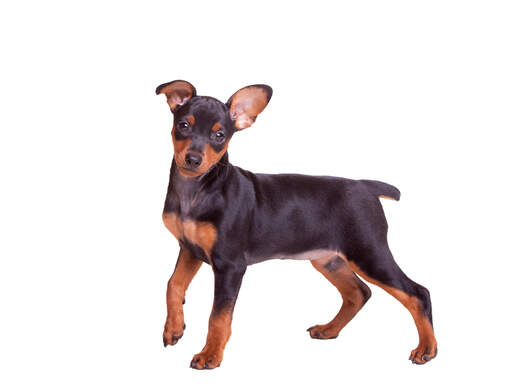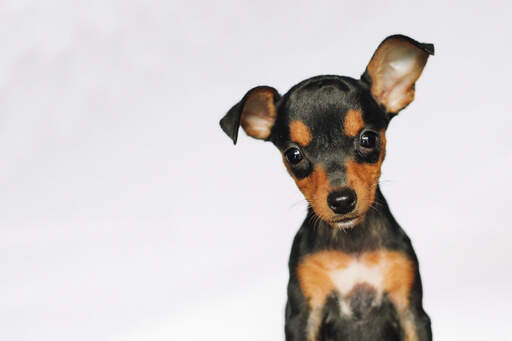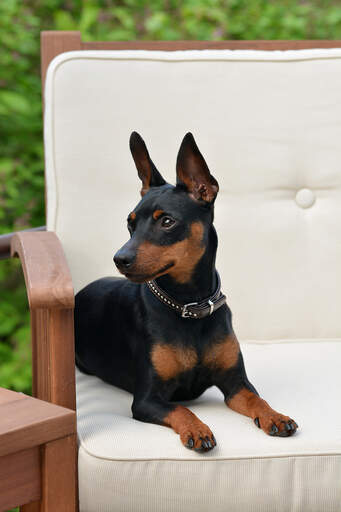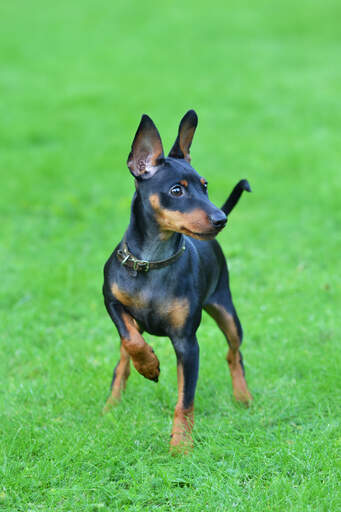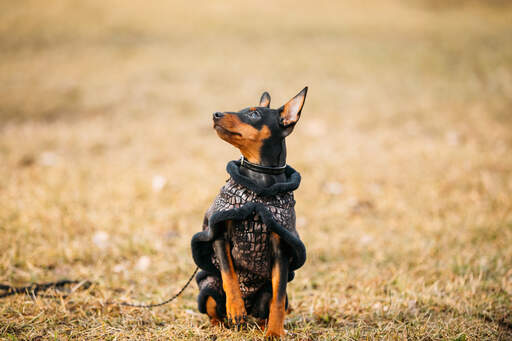Miniature Pinscher hund





History
The Miniature Pinscher, or Min Pin, originates from Germany and dates back hundreds of years; although written records only go back two hundred or so years. Bred for rat catching and vermin control in homes and on farms, it was thought to be a miniature version of the Doberman Pinscher, but this is incorrect; it is a breed in it's own right and predates the Doberman. Known simply as Pinscher (biter) after the First World War, they became very popular in Germany and interest soon grew around the world. They were officially renamed the Miniature Pinscher in 1972.
Behaviour
The Min Pin is an active, curious and alert dog that thrives around it's family and will want to involved in everyday life. They are best suited to a family with older children as younger ones can be too rough and will receive a nip if not careful. They are confident and always ready for action, but can be wary of strangers and other dogs if not properly socialised. Puppy classes are a must to get them used to other dogs. They are fearless and require you to be in charge at all times to prevent problems when they are older. They are happy dogs, who like to play and will act the clown to get attention from you. They are loving and affectionate to their family and love to snuggle up on the sofa and be close to you.
Miniature Pinschers are independent and know their own mind, which can make training difficult. They do need a firm, but kind hand to teach them rules or they could suffer from small dog syndrome and cause problems. Being incredibly active, using games and play to teach them will work well and activities such as agility, Flyball and obedience will help to create a greater understanding of what you want, but will make it fun for them. They do like to please you and see you happy, but don't always understand how to do it (or so they lead you to believe)!!
They require a long daily walk, but this can be on a lead. If you are able to walk them in a very secure area, even better. Play with other dogs should be watched as they are sturdy, but can sometimes get injured if play is too rough. They are escape artists and will often find their way out of your garden. Forget recall. They are chasers of small furry things and if they spot one and they aren't on the lead...good luck! They also have a tendency to eat anything they find.
Min Pins can suffer from the cold due to their slight frames, so should wear a coat when it's cold. Their short coats only require an occasional brush to remove dead hair. They are quite a healthy breed, but Patellar Luxation and epilepsy are sometimes associated with the breed.
Temperament
Miniature Pinschers have a busy and energetic temperament. They are playful little dogs who will become very attached to their owners. They enjoy cuddles on the sofa and energetic games but they are strong willed and difficult to train.
They are also particularly unfriendly to other pets or strange dogs and they show no love for strangers. Some of this can be helped through early socialisation but their territorial instincts are very strong. On a brighter note this does make them exceptional watchdogs.
Health Problems
Health problems that may affect Miniature Pinschers include canine hip dysplasia (CHD), Legg Calvé Perthes disease (deformation of the femoral head which can cause lameness and joint swelling), epilepsy, heart disease, cataracts, progressive retinal atrophy (PRA: degeneration of the retina which can lead to blindness), skin problems and hypothyroidism.
Breed Details
- Status: Common
- Life Expectancy: 13 - 17 years
- Vægt: 3.6 - 4.5 kg
- Højde: 10 - 12"
- Rare: Nej
- Coat: Lavt
- Grooming Requirements: Once a week
- Town or Country: Either
- Minimum Home Size: Flat
- Minimum Garden Size: No Garden
- Breed Type: Toy Dog
- Størrelse: Lille
- Energy Level: Høj

